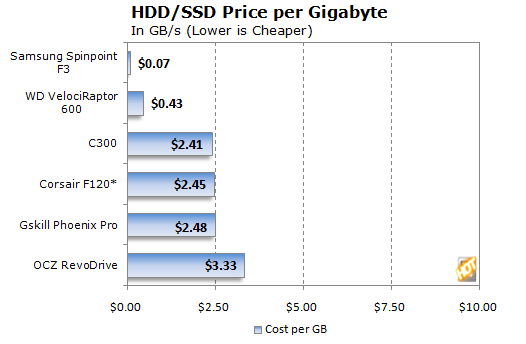Toshiba Details Hard Drive Density Innovation
Ever since SSDs began to hit the mass market several years ago, analysts have tied themselves in knots attempting to predict when solid state drives would reach price parity with their magnetic counterparts. This isn't expected to occur anytime in the immediate future—SSDs remain some 34x more expensive than HDDs when compared in terms of cost-per-GB—but an increasing number of voices have wondered how much longer traditional hard drives will be around.

At the 21st Magnetic Recording Conference today, Toshiba demonstrated a new prototype hard drive that could push HDD capacities far higher by using bit-patterned media. At present, modern drives use what's called perpendicular recording; a technology that's expected to top out at an arreal density of 1Tb/in2. For now, that's plenty—Toshiba claims its highest-density drive is just 541 Gb/in2; the current crop of two-platter 1TB drives from Seagate, WD, and Samsung offer arreal densities between 329 Gb/in2 and 400 Gb/in2.
The advantage of bit-patterned media is that data is stored in an array of uniform magnetic cells, with one bit of data corresponding to one magnetic bit of storage. What makes Toshiba's prototype significant is that it's the first time a company has been able to organize the data into a pattern of rows that could be read and searched within a reasonable time frame. Toshiba claims it was able to gain "usable signals" from a recording head passing over the BPR platter.
 Toshiba doesn't expect BPR drives to arrive until 2013 at the earliest, but anticipates that even the first generation of BPR drives could offer an arreal density as high as 2.5 Tb/in2. Later products could reach densities of 5 Tb/in2. The practical upshot of all this is that hard drives will continue to maintain a sizeable capacity advantage relative to SSDs. This won't stop SSDs from munching more market share. As consumers come to feel that SSDs are "big enough" on their own, an increasing number of buyers will likely opt to stick to a single storage solution rather than opting for an SSD + HDD.
Toshiba doesn't expect BPR drives to arrive until 2013 at the earliest, but anticipates that even the first generation of BPR drives could offer an arreal density as high as 2.5 Tb/in2. Later products could reach densities of 5 Tb/in2. The practical upshot of all this is that hard drives will continue to maintain a sizeable capacity advantage relative to SSDs. This won't stop SSDs from munching more market share. As consumers come to feel that SSDs are "big enough" on their own, an increasing number of buyers will likely opt to stick to a single storage solution rather than opting for an SSD + HDD.
Even if this happens, high-capacity drives could be instrumental to the widespread adoption of digital downloads. Historically, consumers have demonstrated a consistent desire to save the material they've downloaded, but a high-quality HD encode of a television show can break 20GB per season. There aren't many people regularly encoding and saving material at that quality level, but it wasn't so very long ago that only the most well-heeled of us could afford to rip and store multiple DVDs on a single system.
Don't look for this new technology to boost actual HDD transfer rates, however—Hitachi hopes to maintain current drive performance while drastically increasing arreal density. Since access times and arreal density tend to be negatively correlated, simply keeping performance steady would be quite an accomplishment.

The advantage of bit-patterned media is that data is stored in an array of uniform magnetic cells, with one bit of data corresponding to one magnetic bit of storage. What makes Toshiba's prototype significant is that it's the first time a company has been able to organize the data into a pattern of rows that could be read and searched within a reasonable time frame. Toshiba claims it was able to gain "usable signals" from a recording head passing over the BPR platter.

Even if this happens, high-capacity drives could be instrumental to the widespread adoption of digital downloads. Historically, consumers have demonstrated a consistent desire to save the material they've downloaded, but a high-quality HD encode of a television show can break 20GB per season. There aren't many people regularly encoding and saving material at that quality level, but it wasn't so very long ago that only the most well-heeled of us could afford to rip and store multiple DVDs on a single system.
Don't look for this new technology to boost actual HDD transfer rates, however—Hitachi hopes to maintain current drive performance while drastically increasing arreal density. Since access times and arreal density tend to be negatively correlated, simply keeping performance steady would be quite an accomplishment.

